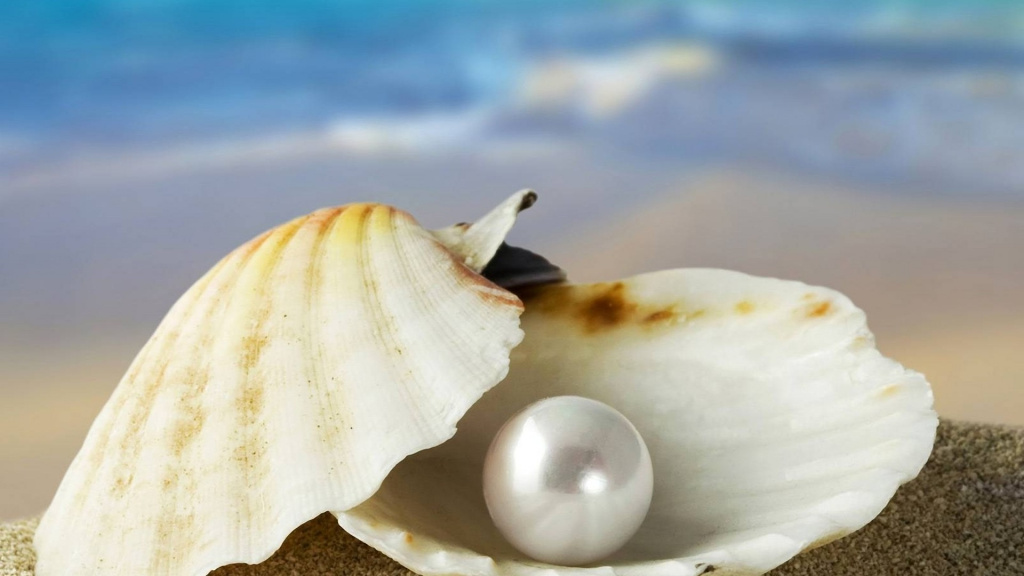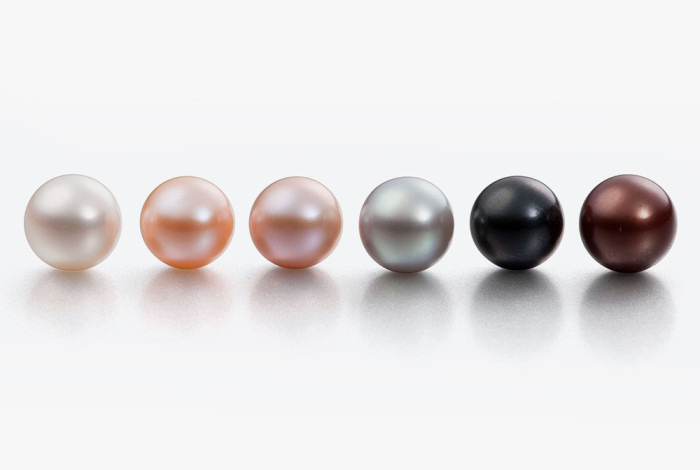Pearls have been used as jewelry for many centuries. Pearls were reputed to be rare, therefore they were the property of very wealthy people and the aristocracy. Pearls are considered a female adornment, perhaps this is due to the fact that the shape of the mollusk, inside which the pearl grows, resembles the female genitals. As time goes on, products from cultured pearls have appeared on the market, but this gem is still a symbol of luxury, prestige and good taste.
Creating a pearl

Natural pearls are a formation that occurs during the life of sea and river molluscs. When a foreign body (a grain of sand, a fragment of a shell, etc.) enters the shell, the mollusk begins to envelop it with mother-of-pearl, and after a certain time a pearl is formed. Natural pearls are rare and dangerous to mine, which is why they are so highly prized that they become the subject of an auction.
Modern jewelers mainly work with cultured sea pearls, which first became known in the early 20th century. Pearl cultivation originated in Japan and has become widespread where the conditions are right. According to the technology, an oyster or mussel is implanted with a bead or a piece of mother-of-pearl, and after 18-24 months a pearl grows in the shell. Such pearls have very few differences from their natural counterparts.
Cultured pearls have long been known to people. It is obtained by applying various compounds to a ball of porcelain, glass or plastic. Originally, an artificial analogue of jewelry was made from a glass ball filled with paraffin (the so-called 'Roman pearls') or coated with a fish scale-based product to obtain a pearlescent sheen. Modern technologies make it possible to produce artificial pearls, which in appearance are indistinguishable from natural.
Variety of pearls

The general picture of pearl types is as follows:
natural, subdivided into several groups:
-
natural marine (mined in the Persian Gulf, the Red Sea, off the coast of Japan and Australia);
-
natural river (mining is carried out in China, Russia, Germany);
-
cultivated (by technology);
-
cultivated without adherence to standards (sold in the resorts of India, Thailand and China);
artificial, which is of two types – high quality (for example, 'Majorica' pearls) and ordinary (for costume jewelry). Does not apply to jewelry.
All types of pearls differ in their value. Thus, pearls from the South Sea are considered the most valuable of the cultivated species. Black pearls from Tahiti are unique due to their extraordinarily thick mother-of-pearl layer. The smallest Keshi sea pearls have a low price. River (freshwater) pearls are less valuable than sea pearls, although they have luster and durability.
Color, shine, beauty

Due to the fact that the current market is literally flooded with pearls, it is necessary to learn how to distinguish a fake from a real quality product. Verification is usually carried out according to several parameters:
-
shine and color;
-
quality of mother of pearl;
-
shape and size.
Natural pearls are easily identified by their luster. A natural pearl shimmers and glows from the inside. If the pearl is of high quality, then you will notice that there is a difference between a bright area and a shaded area. As a result, there is a visual illusion of the presence of a ball inside the pearl.
Natural pearls have various colors, the palette has about 120 shades. Among the expensive items there are pearls of black and white color, bronze, green, silver, cream, gold, purple shades. What color the pebble will acquire depends on the type of mollusk-producer, on the place of cultivation and on the age of the pearl (degree of maturity). The most rare and expensive stones are pink and blue.
More mother-of-pearl, larger size

The quality of pearls directly depends on the thickness of the nacre layer. This indicator has a significant impact on the price of the product. Another important factor in determining the quality of a pearl is the surface condition, how smooth it is and whether it is evenly colored. The presence of chips, dents, specks and other damage greatly reduces the value of the pearl.
By their shape, pearls can be:
-
round (most often);
-
spherical;
-
in the form of drops;
-
fantasy outlines ('baroque');
-
they look like animal silhouettes or different objects (they have a separate name – paragons). It is believed that such stones are endowed with special mystical properties and are natural talismans. Most often, gold serves as a frame for paragons.
The shape of the pearls is best viewed against a black background to make any imperfections more noticeable. In a finished product of high quality, all pearls must be of the same size and lie flat. The holes should be in the center.
The size is simple – the larger the pearl, the higher the price. The size is determined by the diameter, it is considered in millimeters. River pearls, being smaller, are usually in the range of 3-11 mm, and sea pearls can reach 22 mm.
For jewelry, the weight of large pearls is usually determined in grains or carats. Small pearls are called grain pearls, they are sold by weight. Large pearls are very rare. The largest pearl was discovered in 1934 near the Philippines. This miracle of nature weighs 6.35 kg, outwardly resembles a head in a turban, therefore it has the name 'Pearl of Allah'. Large elite pearls are usually included in the register of foreign exchange reserves of the state along with other precious stones.
How to choose natural pearls

In order not to be mistaken with the choice, you should check the proposed pearls for their compliance. The tests are not difficult, but in the end you will be sure that you are buying real pearls.
You can throw a pearl onto a smooth surface of sufficient hardness from a height of about half a meter. Natural pearls, unlike artificial ones, will jump resiliently.
If there is an opportunity to look through the pearl into the sun, then you will notice that the natural will glow blue, and the cultivated one will glow green. Confirmation that you have a cultivated specimen in your hands are uneven, chipped holes.
You can just pick up the pearls. If at the same time you feel cool, then you are offered natural. When two pearls are rubbed against each other, light dust is generated, which confirms the natural origin of the products.
The original way to determine naturalness is to draw a strip of pearl across the surface of your tooth. Real pearls have microscopic roughness, so they will creak.
Affordable luxury
The cost of pearl jewelry ultimately depends on many factors – from origin and size to shape and surface quality. Therefore, you can choose for yourself a product that is completely suitable both in price and in appearance and quality. Buy and wear with pleasure, because they say that the stone is alive and in the box it can get bored and die. Try not to let this happen, let pearls show themselves regularly and adorn your cute look.
In the following articles, our experts will tell you how to choose the right umbrella and the secrets of choosing a wedding ring.
Attention! This material is the subjective opinion of the authors of the project and is not a purchase guide.









